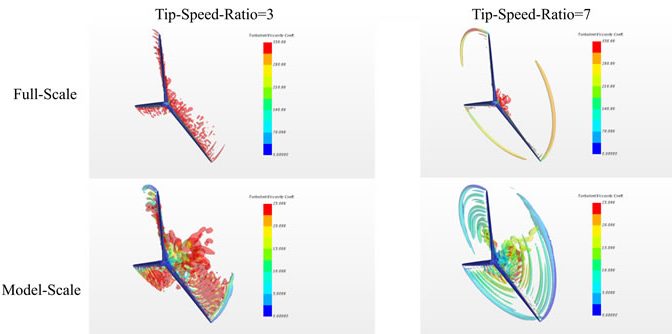Wind energy is one of the most researched topics in the renewable energy ecosystem. During the last decades, the focus has been on several aspects of modeling and analysis of onshore wind turbines., Wind energy has enormous potential and has been topic of intense study recently, especially in Brazil.
Led by Professor Alexandre Simos of the Department of Naval and Ocean Engineering at the Polytechnic School of the University of Sao Paulo (EPUSP) in Brazil, and thanks to funding provided by the Office of Naval Research Global (ONR Global), a group of researchers is finding ways to increase the country’s wind power generation capacity by leading a large effort to reducing the structural weight in new designs of Floating Offshore Wind Turbines (FOWTs).
FOWTs have many opportunities and obstacles. Among the advantages, the availability of constant winds and a suitable speed for the use of turbines in their optimum efficiency. Among the disadvantages are the high costs for installation, mooring lines and the large length of cables required for energy transmission. In this context, saving structural weight in the floater is, certainly, very welcome.
“In the past decade, we’ve seen a lot of effort in the offshore engineering field in order to conceive, design and validate this new kind of floating system. Nowadays, after many demonstration projects, the viability of the concept is proven, and already as a result we are witnessing the first commercial floating wind farms”, states Professor Simos.
Furthermore, the design of FOWTs is a complicated task that must consider variables such as the responses to wave, current and wind loads, the static and dynamic stabilities and the structural behavior of the mooring lines. Hence, several research projects have been performed by different groups aimed at developing numerical codes and laying the grounds for experimental benchmarking for FOWTs.
While floating offshore wind turbines will provide an alternate energy source for seabasing for the fleet, Paul Sundaram, Science Director for ONR Global in Sao Paulo, notes that “the goal was to understand through modeling how to design and manage complex structures in the dynamic ocean environment. This is very important for the US Navy, to design and build engineered resilient systems in the ocean”.
The role of Brazil
Technology will play a major role in the future expansion of wind energy in Brazil, a growth projected to take place rather soon. Regulation for the installation of offshore wind farms has already been discussed in the Brazilian Congress, and the industry is preparing for new developments in the sector, which indeed has a huge potential, especially in the country’s northeast coast.
“In recent years, Brazil has very rapidly expanded its wind power generation capacity, which is nowadays above 13 GW, around 8% of Brazil’s total capacity. These figures make wind power the second source of electrical energy for the Brazilian grid. All this production is made onshore, in many wind farms spread throughout the country, but mainly concentrated in the northeast shore where the wind potential is excellent”, adds Professor Simos of the University of Sao Paulo.
The Polytechnic School of the University of Sao Paulo also has a research group that works on offshore systems for the exploration and production of oil and gas, which is a very important economic activity in Brazil. Therefore, the initial idea of the researchers was to benefit from the experience in floating oil & gas systems to adapt and develop new computational tools for the analysis of FOWTs. These are used for predicting the response of the structures in waves and wind, and for estimating the tensions on the mooring lines, structural loads and vibrations.
Future applicability
It is also key to mention that, aside from the main objective of generating green energy for the electrical grid, other applications for FOWTs are being projected. For instance, there are ongoing projects for using them as auxiliary power for subsea equipment in the oil and gas fields. This will drive technology to deep waters and therefore new challenges might be faced.
“We are still developing part of the hydrodynamic models for predicting the wave forces on the floaters. Nonlinear effects involved in the drifts of the floater and which may be important for the moorings design are difficult to predict with accuracy for this kind of structure. We are testing different alternatives and conducting model tests in our wave basin for verifying the performance of the numerical models, says Professor Simos.
Since FOWTs are relatively new devices, there is still space for design optimization. For example, new concepts of floating hulls aimed at reducing the motions of the turbine are still being designed and proposed. Also, to make the use of FOWTs in deep waters (greater than 1000m) economically feasible, the design of optimized moorings, made of light materials, will also be a challenge.
“Such structures will be strategic for sea-based transportation as a renewable energy source. FOWTs are usually more effective in deeper waters where wind speeds are higher, and winds are steadier. Small increases in wind speeds can lead to a much larger energy production”, notes Sundaram.


